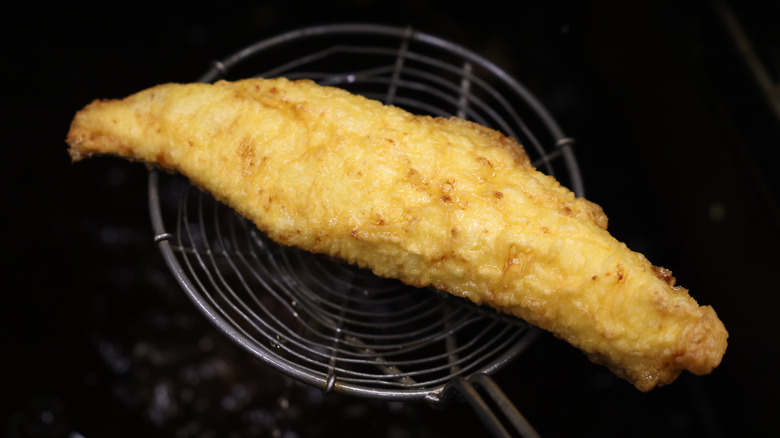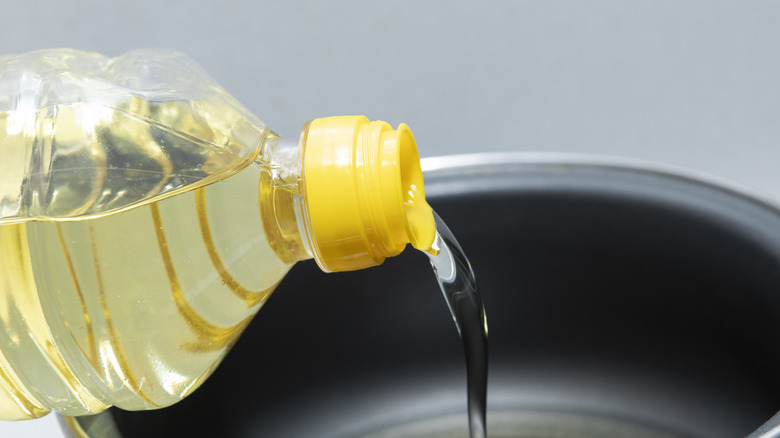The Best Kinds Of Oils To Use When You're Deep-Frying Fish
When it comes to deep-fried fish dishes, there are two things you can't do without: the fish and, of course, the frying oil. Without the oil, frying fish is quite literally impossible. (That's still true even if you're using an air fryer as air frying is more like baking the fish rather than frying it.) And since the choice of oil not only impacts the flavor but also influences the texture of the fish, it's crucial to select the right type from the start, right after choosing the best fish for frying.
The criteria are rather simple: You'll want a cooking oil that has a good balance between having a high smoke point and as little flavor intrusion as possible. You'll obviously want your fried fish to taste like the batter and the seasoning rather than the cooking oil. With that said, out of all the cooking oil options you'll find in grocery stores today, two come out on top: canola oil and vegetable oil.
The canola versus vegetable oil debate
Canola oil — known for its light texture and moderate price — is one of the most versatile options for deep-frying. Popeyes uses it to deep-fry its chickens and fries, and so does McDonald's and a long list of other food chains. With a smoke point of between 375 to 450 degrees Fahrenheit, canola oil allows you to fry foods at high temperatures without the risk of the oil burning or smoking, ensuring your fish achieves a crispy exterior while remaining juicy inside. It also helps that canola oil is neutral in flavor, so the natural, briny taste of the fish will shine through (as well as any other seasonings you decided to add to the dish).
On the other hand, vegetable oil, a blend of various plant-based oils, boasts a similar smoke point range (between 400 and 450 degrees Fahrenheit), making it equally capable of giving you that nicely-fried texture that canola does. This one also has a neutral taste, so no off-flavor will get into your food, either.
With how similar these oils are to one another, it's a tie — it's totally up to you. You can really pick whichever you prefer (for any reason) and your fried fish should turn out delicious all the same. In the end, it really comes down to availability and which one is cheaper or more convenient to pick up while you're out running to get groceries.
There are alternatives
While they're the most popular, canola and vegetable oils aren't the only kinds that you can fry your fish in. Safflower oil, for example, also merits consideration. It has a similarly high smoke point (between 475 and 500 degrees Fahrenheit) and a neutral flavor. However, if you do decide to go for this type, make sure that you're picking up the refined version and not the unrefined or semi-refined one. Refined safflower oil has undergone extra processing to make sure that it doesn't come with any off-tastes or impurities. While this type would also taste fairly neutral, it has a much lower smoke point, so you'd have greater odds of burning it while you're frying.
If you like your deep-fried fish with a side of nutty taste, you can also try flavored oil alternatives, such as peanut oil. This one's used by Chick-fil-A for its fried chickens. Additionally, sunflower oil is on the card, offering high smoke points and similar nuttiness to peanut oil (if cold-pressed and unrefined; the refined stuff tastes neutral.) If you don't mind it (or are seeking out the nutty flavor), it'd be plenty awesome to fry your fish in!


